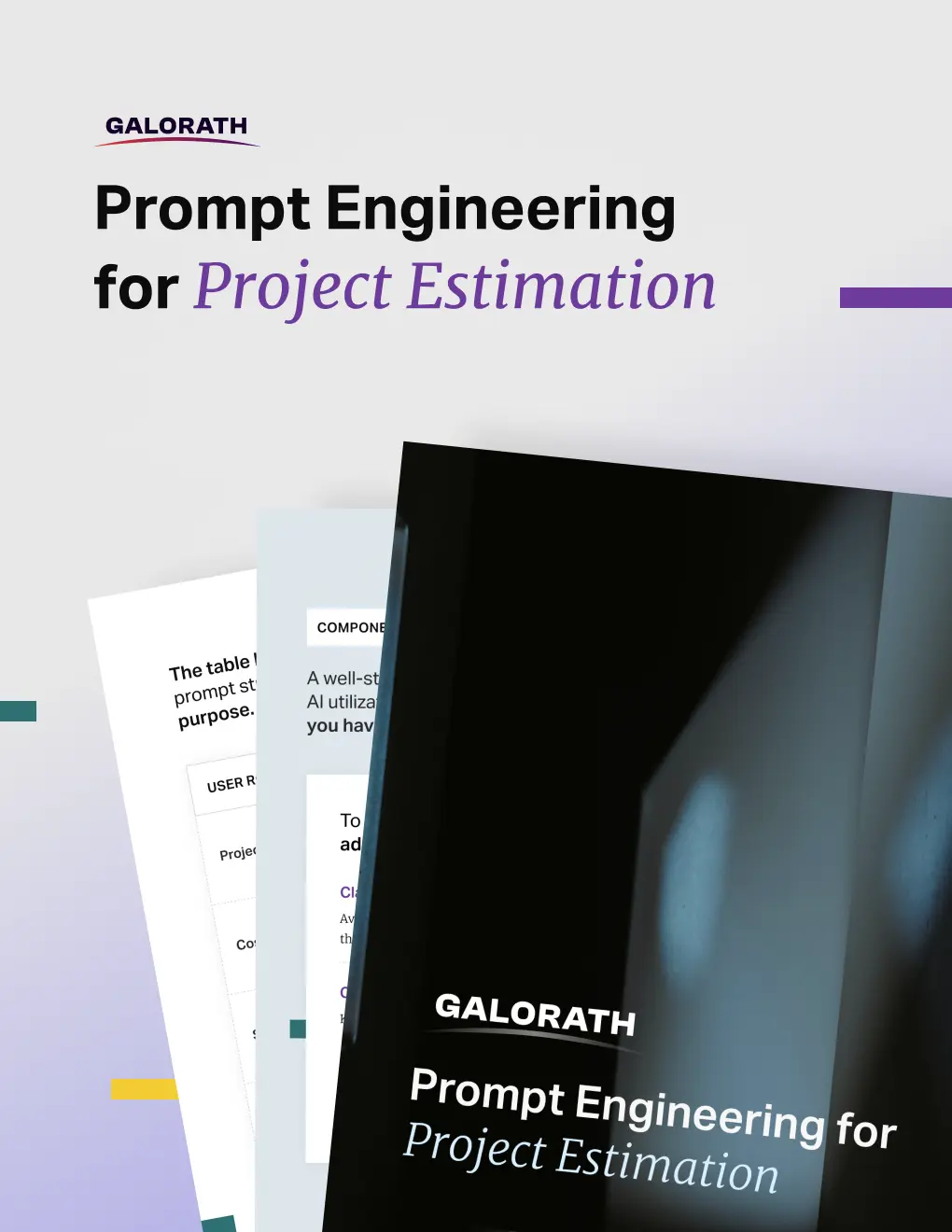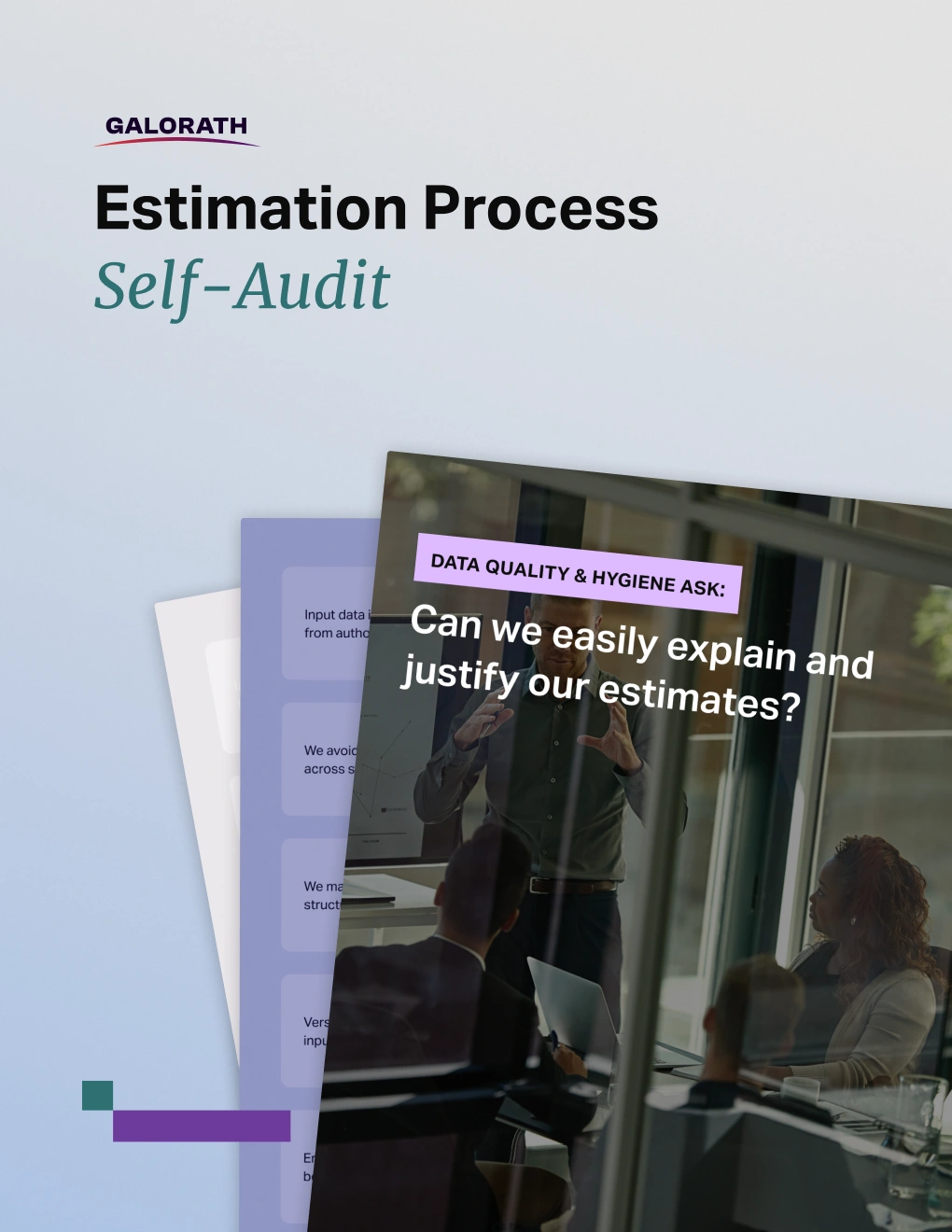Mastering Cost Risk with the CRED Model: A New Approach to Managing Uncertainty
Design-to-Cost (DTC) is a proactive engineering methodology that treats cost as a non-negotiable design parameter from the concept phase. It enables cost accountability through parametric modeling, digital engineering integration, and regulatory compliance automation across aerospace and defense programs.
Delivering mission-critical systems on time and within budget is a persistent challenge. Traditional workflows prioritized performance, pushing cost control to late development phases. This practice often results in overruns and delays. DTC reverses this approach. It treats cost as a technical requirement that is defined early, tracked constantly, and weighted equally with performance.
This guide examines DTC’s principles, process structure, and enterprise integration. It also introduces how specialized tools unify cost modeling, digital engineering workflows, and compliance automation into a cohesive DTC platform for aerospace and defense.
Looking for Design-To-Cost Software Solution?
SEER enables early cost visibility and trade-off analysis to drive affordable, value-focused design decisions.
Design smarter, estimate faster, and deliver within target costs.
What Is Design-to-Cost (DTC)?
Design-to-Cost is an engineering and cost management methodology that establishes a fixed cost target as a core design parameter. This ensures that affordability is enforced from the earliest phase of system development. In aerospace and defense, DTC shifts the design paradigm. It treats cost as a non-negotiable constraint, not a byproduct. Engineers are tasked with delivering required capabilities within pre-established budget limits.
This cost-first approach is rooted in NASA’s Cost as an Independent Variable (CAIV) framework. CAIV formalized the idea that cost should guide technical decisions. It reversed the historical model where performance was fixed and cost was fluid. Under CAIV, cost becomes an input variable set at the program’s start. It is balanced continuously against schedule and technical performance. This realignment encourages disciplined trade-offs and innovation.
The U.S. Department of Defense (DoD) institutionalized DTC principles through its Better Buying Power initiatives. These policies require affordability targets to be defined early and maintained throughout the lifecycle of major defense programs. Support for DTC also comes from authoritative standards.
The GAO Cost Estimating and Assessment Guide mandates reliable early-stage cost estimates. Similarly, AACE International’s Total Cost Management (TCM) framework promotes lifecycle-based cost governance beginning at the concept design stage.
To operationalize Design-to-cost, teams must:
- Set top-level program cost targets in the conceptual phase.
- Decompose those targets into subsystem and component-level cost allocations.
- Assign responsibility for meeting each allocation to respective engineering teams.
- Ensure design solutions meet performance needs while staying within assigned budgets.
This structured decomposition prevents cumulative overages and embeds accountability across the program. It creates a system-wide culture of financial discipline while maintaining technical excellence.
How Is Design-to-Cost Different from Design-to-Value?
Design to cost prioritizes meeting a fixed cost target, while Design to value optimizes the value delivered per dollar spent. DTC is cost-constrained, while DTV is value-driven. The Better Buying Power framework endorses both methods, and a should-cost analysis can support either approach.
| Comparison | Design-to-Cost (DTC) | Design-to-Value (DTV) |
| Primary Goal | Meet a fixed cost ceiling | Maximize mission value per dollar |
| Flexibility | Rigid cost target | Flexible if performance gain is justified |
| Use Cases | Commoditized components, budget limits | Strategic systems, innovation-focused programs |
| Trade-Off Logic | Constrain design within the cost cap | Optimize value even if the cost increases |
| Compliance Fit | Aligned with FAR, DFARS, DCAA | Requires strong justification and audit trail |
Program managers choose the appropriate strategy based on mission priorities, stakeholder expectations, and contractual constraints.
How Does Design-to-Cost Integrate with Digital Manufacturing?
DTC integrates directly with digital engineering, manufacturing simulations, and enterprise cost systems. It is a cross-functional discipline that connects engineering design, manufacturing execution, and program cost governance. Design to cost success depends on seamless integration with digital environments and enterprise-wide cost control systems.
Modern DTC strategies are powered by Model-Based Systems Engineering (MBSE) and digital twins. These tools form a digital thread that enables real-time feedback on the cost impacts of design choices. When an engineer modifies a model, the system instantly projects cost changes. This transforms DTC from a static cost gate to a continuous decision loop depending on the design changes.
The digital thread extends into digital manufacturing systems. The same design models inform tooling requirements, assembly planning, and supply chain constraints. While conceptually similar to target costing, DTC differs in its application. In commercial markets, target costing begins with a market price. In defense programs, the “target” is an affordability cap imposed by the government, based on lifecycle mission value.
What Is the Process to Implement Design-to-Cost Effectively?
Effective design-to-cost implementation follows a structured, auditable process aligned with GAO, AACE, and DoD cost management standards. It requires repeatable, traceable processes that integrate program management, digital engineering, and enterprise cost systems.
The following 12-step framework, broken into 4 distinct phases, outlines a path to successful implementation.
This structured process ensures that cost is managed proactively across the entire program lifecycle.
Phase 1: Planning and Goal Setting
- Define Program Objectives: Establish mission, key performance parameters (KPPs), and context.
- Develop a Life Cycle Cost Estimate (LCCE): Must be comprehensive, well-documented, accurate, and credible per GAO standards.
- Set Affordability Targets: Convert funding caps into binding DTC cost constraints.
Phase 2: Decomposition and Cost Allocation
- Create the Work Breakdown Structure (WBS): Decompose the system into trackable cost entities.
- Flow Down Cost Targets: Assign cost limits to Integrated Product Teams (IPTs), aligned to AACE maturity levels.
Phase 3: Analysis and Design Integration
- Conduct Analysis of Alternatives (AoA): Quantify cost, performance, and schedule trade-offs.
- Enable Continuous Trade Studies: Allow for real-time evaluation of cost-performance impacts.
- Integrate with Digital Engineering Tools: Link cost models to PLM/MBSE environments.
Phase 4: Monitoring, Documentation, and Control
- Track EAC vs. DTC Targets: Monitor variance at the WBS level and analyze root causes.
- Quantify and Mitigate Cost Risks: Use parametric risk models to set reserves.
- Maintain Full Audit Trail: Document all assumptions, decisions, and data sources.
- Update Estimates Regularly: Reflect design changes, real costs, and updated assumptions.
Change Management and Cultural Adoption of Design-to-Cost
Adopting DTC requires a cultural shift from perfection-focused design to value-conscious engineering. Organizations must build cost-awareness into engineering reviews, incentive structures, and leadership development programs. Effective change management includes training, leadership alignment, and regular communication around cost goals.
Training must be tailored: design engineers need practical knowledge of cost drivers, trade-off analysis, and real-time estimation tools. Cost professionals require advanced training in parametric modeling aligned with ICEAA standards. This dual-track curriculum ensures alignment and shared accountability.
Transitioning from Traditional to Design-to-Cost Approach
Shifting from traditional cost estimation to a DTC-based framework requires a structured roadmap. Key steps include assessing current cost control maturity, piloting parametric models in select programs, retraining engineering and finance staff, and integrating tools like SEER by Galorath across digital engineering workflows.
Organizations should prioritize early wins, align leadership incentives, and continuously refine their estimation and design feedback loops.
What Are the Benefits of Design-to-Cost Implementation?
Design-to-cost enhances cost predictability, reduces rework, and aligns engineering with affordability goals. It delivers measurable lifecycle savings and improves program execution. By establishing fixed cost targets early, design-to-cost:
- Improves financial forecasting accuracy.
- Reduces the risk of overruns.
- Strengthens program credibility and audit readiness.
One of the most well-known success stories is the Joint Direct Attack Munition (JDAM) program. The design team embedded unit cost as a KPP, which led to the use of COTS components and simplified manufacturing. The result was a cost-effective, high-performance solution.
Modern DTC frameworks amplify these outcomes through digital engineering.
The U.S. Air Force has recorded up to 20% savings in cost and schedule using digital twins and real-time trade-off simulation.
Peer-reviewed case studies further reinforce DTC’s practical value. For instance, a 2024 study on industrial system design demonstrated how DTC methodologies enabled lifecycle cost optimization by balancing reliability, availability, and maintenance factors, particularly relevant for complex, long-lived systems like turbines or rail vehicles (Benfriha et al., 2024).
Benefits also extend beyond direct savings, as Design-to-cost also:
- Stimulates innovation: Cost constraints can drive elegant, minimalistic designs.
- Enables early trade-off dialogue: Teams can assess performance vs. cost earlier.
- Improves market competitiveness: This is especially relevant for commercial aerospace.
While academic validation has largely originated in construction and civil engineering, the core quantitative methodologies (such as BIM-based estimation, parametric modeling, and machine learning) have proven highly transferable. These techniques have reduced cost variance from 15% to under 1% in real-world projects and are increasingly applied in aerospace and defense, strengthening the cross-sectoral credibility and ROI of Design-to-Cost.
What Are the 4 Challenges of Adopting Design-to-Cost?
Design-to-cost initiatives often face cultural resistance, technical overreach, and accountability gaps. Overcoming these challenges requires incentive alignment, realistic assumptions, and disciplined cost allocation across all program levels.
Here is a more detailed look at each challenge.
Challenge 1: Lack of Cost-Based Incentives
- Problem: Engineers and program managers are often rewarded solely on performance and schedule metrics, not affordability.
- Solution: Integrate cost performance into formal incentives. Link meeting DTC targets to award fees, performance reviews, and leadership opportunities.
Challenge 2: Performance Over Cost
- Problem: “Perfection at any price” remains the default mindset, causing engineers to resist trade-offs.
- Solution: Mandate structured trade-off reviews. Require that all technical options be evaluated for cost impact using quantifiable data.
Challenge 3: Unrealistic Technology Assumptions
- Problem: DTC estimates are often based on unproven or immature technologies.
- Solution: Use Technology Readiness Levels (TRLs) to evaluate component maturity. Add risk reserves for anything below TRL 6, following ICEAA guidelines.
Challenge 4: Poor Cost Target Allocation
- Problem: Top-level cost targets are not effectively flowed down to Integrated Product Teams (IPTs).
- Solution: Apply a WBS-based decomposition of the DTC target. Assign and track cost accountability across all subsystems and contractors.
What Tools Support Design-to-Cost Analysis?
DTC requires integrated toolchains that enable real-time cost estimation, digital design traceability, and regulatory compliance. These systems form the backbone of modern aerospace cost engineering.
Key tool categories include:
- Parametric Estimation Platforms: Generate early-stage cost models using historical and technical data.
- Model-Based Systems Engineering (MBSE): Define digital design baselines linked to cost impact models.
- Product Lifecycle Management (PLM): Manage design data and enforce design-to-cost requirements.
- Enterprise Resource Planning (ERP): Supply real-time material, labor, and overhead cost data for modeling.
- Government Compliance Automation: Ensure DCAA, FAR, and DFARS alignment via audit-ready documentation.
These systems must work together under a unified digital engineering strategy. For example, when CAD data changes within the PLM environment, cost models must update automatically. This closed-loop feedback mechanism transforms DTC from an afterthought to a continuous design parameter.
How Does SEER Support the Design-to-Cost Workflow?
SEER by Galorath serves as a powerful design to cost software solution, purpose-built to support early-stage cost forecasting and iterative trade-off analysis within DTC (Design-to-Cost) programs. By leveraging calibrated parametric modeling, SEER allows teams to estimate the cost of systems, software, hardware, and production processes based on minimal initial design inputs—enabling rapid evaluation of alternatives, cost-risk exposure, and performance constraints before design decisions are locked in
SEER capabilities that support DTC execution include:
- Rapid Estimation from Incomplete Data: Enables early affordability assessments using analogies, parametric equations, or historical templates.
- Integrated Cost Risk Analysis: Performs probabilistic cost risk simulations (e.g., Monte Carlo) to quantify confidence levels.
- Real-Time Trade-Off Modeling: Links technical parameters to cost drivers, allowing engineers to instantly see the financial impact of design decisions.
- Digital Engineering Integration: Interfaces with PLM, MBSE, and ERP tools to maintain a continuous digital thread.
- Audit-Ready Documentation: Captures all assumptions, inputs, and calculation logic for traceable DCAA and GAO-compliant reporting.
By implementing SEER within a DTC framework, contractors can transition from cost tracking to proactive cost management, ensuring affordability goals are enforced throughout the product lifecycle.
While much of the peer-reviewed literature on cost estimation advancements stems from the construction and civil engineering sectors, the underlying methodologies (such as BIM integration, machine learning-based estimation, and parametric modeling) have demonstrated strong applicability in aerospace and defense. Studies show cost variance reductions from 15% to under 1% using these methods.
Tools like SEER incorporate these principles by automating estimation, integrating with digital twins, and enabling real-time trade-off analysis. This cross-sectoral validation reinforces the relevance and ROI of DTC in high-stakes programs.
In Which Industries Is Design-to-Cost Used?
Although pioneered in defense programs, DTC has proven value across multiple high-stakes industries where lifecycle cost control is critical. Each sector adapts the core principles of DTC to its unique engineering challenges and production constraints.
Aerospace and Defense Programs
In this sector, DTC is essential for meeting government affordability mandates while managing mission complexity and risk. Programs such as fighter jets, space launch systems, and missile platforms operate under fixed cost ceilings. DTC frameworks align cost with capability early in development, improving predictability and compliance.
Globally, defense organizations such as NATO and the European Defence Agency (EDA) have adopted parallel life cycle cost principles, further validating DTC as a best practice across international acquisition strategies.
Automotive and Advanced Manufacturing
In the automotive sector, DTC supports competitive pricing, supply chain optimization, and compliance with safety regulations. With thinner margins and higher production volumes, even small design changes have major cost implications. Learning curve analysis helps plan cost reduction across multi-year production runs.
Government and Commercial Software Projects
In software-intensive programs, DTC methodologies ensure that capability is delivered within budget by forecasting effort, schedule, and sustainment costs. This applies to both defense software systems and commercial IT programs, preventing cost growth in large-scale enterprise applications.
What KPIs Prove Design-to-Cost Is Working?
To validate the effectiveness of a DTC strategy, organizations must implement a structured performance measurement framework grounded in objective, defensible metrics. These Key Performance Indicators (KPIs) provide continuous feedback on cost control, program discipline, and compliance alignment.
Cost Performance Metrics
- Cost Variance to Baseline: Measures the deviation between the current Estimated Cost at Completion (EAC) and the original DTC allocation.
- Change Order Rate: Tracks the frequency and financial impact of post-baseline design changes.
- Should-Cost Delta: Compares actual or forecasted program costs against an independently derived “should-cost” target.
- Forecast Accuracy: Evaluates how closely prior cost projections align with actual expenditures.
- Digital Engineering ROI: Quantifies cost avoidance and efficiency gains attributable to digital twin simulations and MBSE integration.
Government Compliance and Audit Metrics
- Audit Pass Rate: The percentage of DCAA audits completed without material findings. A high pass rate signals robust internal controls.
- Audit Response Time: Measures the time required to fulfill documentation and data requests during audits.
- BOE Completeness Rate: Assesses the proportion of estimates that include a fully documented, traceable Basis of Estimate.
- CSDR Submission Compliance: Tracks the accuracy, completeness, and timeliness of required Cost and Software Data Reporting submissions.
By integrating both performance and compliance KPIs, organizations can holistically evaluate their DTC strategy’s effectiveness and institutionalize continuous cost control improvement.
Design-to-Cost transforms cost from an afterthought into a core design requirement. By combining digital engineering, parametric modeling, and compliance alignment, it enables aerospace and defense teams to deliver high-performance systems within strict budget limits. As fiscal pressures grow, DTC offers a proven framework for achieving affordability without sacrificing mission success.








